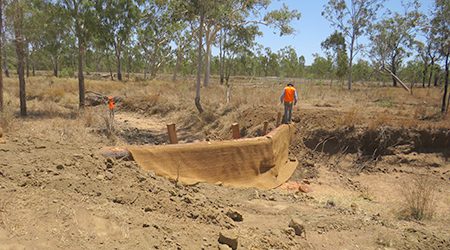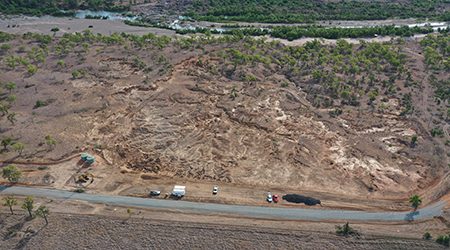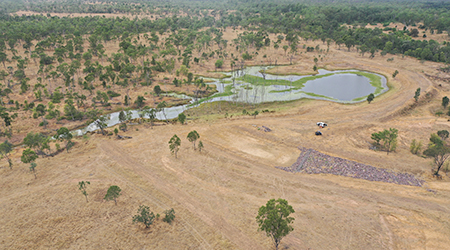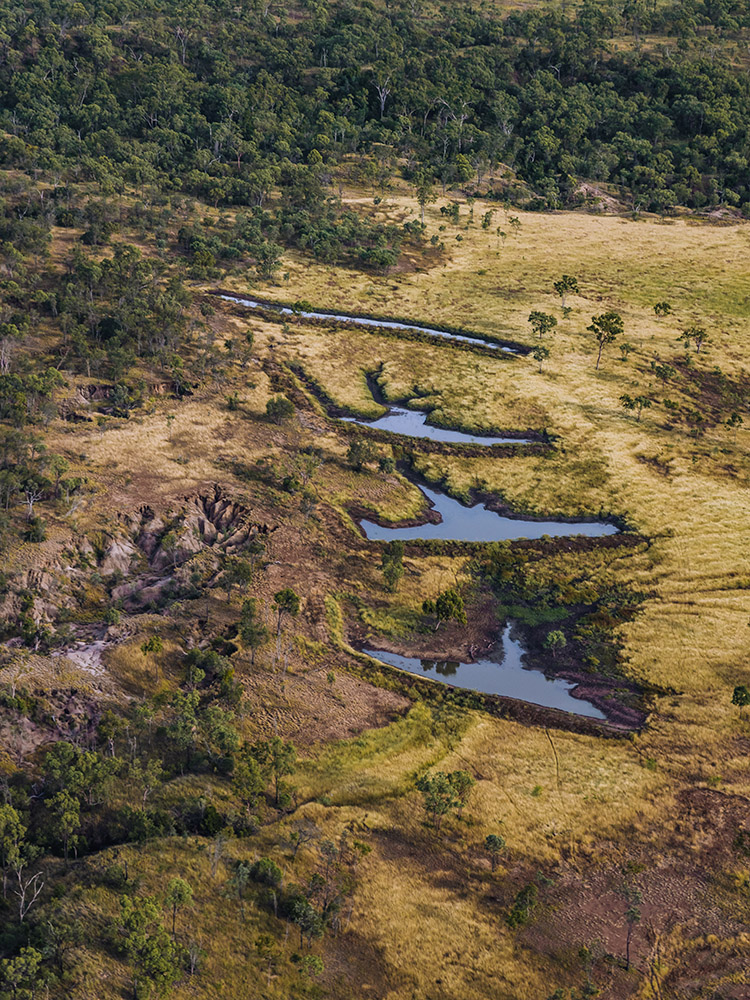Funding to underpin long-term gully maintenance
Between 2017-2020, the Burdekin Major Integrated Project (Landholders Driving Change) completed 25 gully remediation projects (five large-scale and 20 small-scale sites).
Collectively, these gully works treated more than 11,000 linear metres of gullies eroding from 54 gully heads. An estimated 10,500 tonnes of fine sediment was prevented by the works from reaching the Great Barrier Reef each year.
The gully characteristics ranged from small-scale requiring minor interventions carried out by landholders, to large-scale remediation requiring engineered solutions using large-scale earthworks equipment.
The Queensland Government, through the Queensland Reef Water Quality Program, has approved NQ Dry Tropics to use underspend from this tranche of works, and provided additional funding for a total of more than $500,000 to go towards longer term monitoring and maintenance of gully sites.
Monitoring and maintenance work will be carried out from June 2022 to April 2025 and will include three wet seasons.
This project is known as the Burdekin Major Integrated Project Gully Maintenance and Monitoring project.
There is an urgent need to evaluate the most cost-effective methods for reducing the sediment and particulate nutrients generated and delivered from gullies.
Ongoing monitoring is needed to test assumptions on how long treatments will last, required level and frequency of maintenance, and whether reduction in fine sediment exports continues.
The overarching aims of this project are to:
- Monitor gully stability and carry out critical maintenance that will provide confidence in investment and sediment savings.
- Generate and share longer term learnings around timeframes and maintenance costs associated with maintaining gullies in a stable condition over time.
Updates will be provided to the community through The Grit and at events and workshops.
ABOVE: Small-scale gully intervention showing off its success after rain. BELOW: Large-scale gully remediation turning an actively eroding gully system destroying hectares of country every wet season into productive grazing land.
A series of rehydration banks were constructed above the head of a gully to halt the progress of the gully head. Water is now being held in the landscape by the banks instead of running into the gully system, improving water infiltration.






